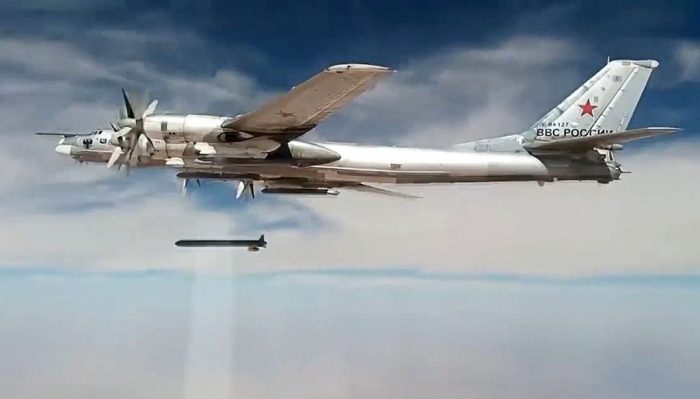Japan on Thursday (March 11) scrambled its Mitsubishi F-15J fighter jets to intercept two Russian nuclear-capable Tupolev Tu-95MS strategic bombers, which were reportedly flying over the Sea of Japan and the Pacific Ocean.
According to media reports, the Russian Tu-95 bombers were in the region to practice strategic strikes against Tokyo, to remind the island nation of Moscow’s sovereignty over the disputed Kuril Islands.
The Kuril Islands Dispute
The Russia-Japan dispute over the island chains dates back to World War II. The region is a volcanic archipelago, located in Russia’s Sakhalin Oblast that stretches approximately 1,300 km northeast from Hokkaido, Japan to Kamchatka in Russia. It separates the eastern edge of the Sea of Okhotsk from the North Pacific Ocean.
It is a chain of 56 islands and minor rocks. The islands contain at least 100 volcanoes, of which 35 are still active. There are several hot springs in the area.
While Japan calls the islands the Northern Territories, Russia refers to the region as the Kurils. The two countries have not been able to sign a formal peace treaty so far.
The region is of huge importance to both nations as the islands are surrounded by rich fishing grounds and are thought to have offshore reserves of oil and gas.
Besides, rare rhenium deposits have been found on one of the islands. The rhenium deposits are important due to their nickel-based superalloys which are used in the combustion chambers, turbine blades, and exhaust nozzles of jet engines.
Its scenic beauty and the presence of a wide variety of bird species increase the tourism potential of the island chains.
Russia Trying To Assert Its Supremacy
While all the islands are under Russian control, Japan claims four southernmost islands calling them ‘Northern Territories’.

Moscow has already deployed missile systems in the region; it is also planning a submarine project with the aim of preventing any potential military use of the islands by the US.
According to the latest media reports, Moscow’s strategic missile-carrying Tupolev Tu-95MS bombers carried out an extended flight near the Japanese borders for a period of nine hours.
This was done with the aim of practicing “strategic strikes” against Tokyo to show Moscow’s superiority in the region.
Russian Aerospace Forces’ advanced Su-35 fighter jets provided protection for the Tu-95 bombers to keep them clear of Japanese F-15 fighter jets.
The Russian Defense Ministry issued a statement to clarify that the Tu-95 bombers were carrying out a planned flight over neutral waters.
“Two Tu-95MS strategic bombers of the long-range aviation conducted a routine flight over the neutral waters of the Sea of Japan and the north-western part of the Pacific Ocean,” said the Russian Defense Ministry.
So far, there has been no official response from either the Japanese government or its military and it remains to be seen what will be the next step by either of the two nations.
What’s Preventing A Peace Treaty?
Former Japanese Prime Minister Shinzo Abe, the longest-serving PM of the Asian country, had pioneered a “new approach” to relations with Russia following his return to office in 2012.
Before Abe, there was a period of about a decade when no Japanese leader made an official visit to Moscow. However, Abe broke the impasse and visited the nation 11 times in six years.
While many Western nations planned to isolate Russia, Abe refused to join the bandwagon against the country even at the risk of criticism from many.
The reason for Abe to pursue strong relations with Russia was to secure his political legacy by finally resolving the territorial dispute over the Kuril Islands and signing a formal peace treaty.
However, with Abe leaving the office due to health reasons, it is not certain whether his successor Yoshihide Suga will follow in his footsteps.
Follow EurAsian Times on Google News




